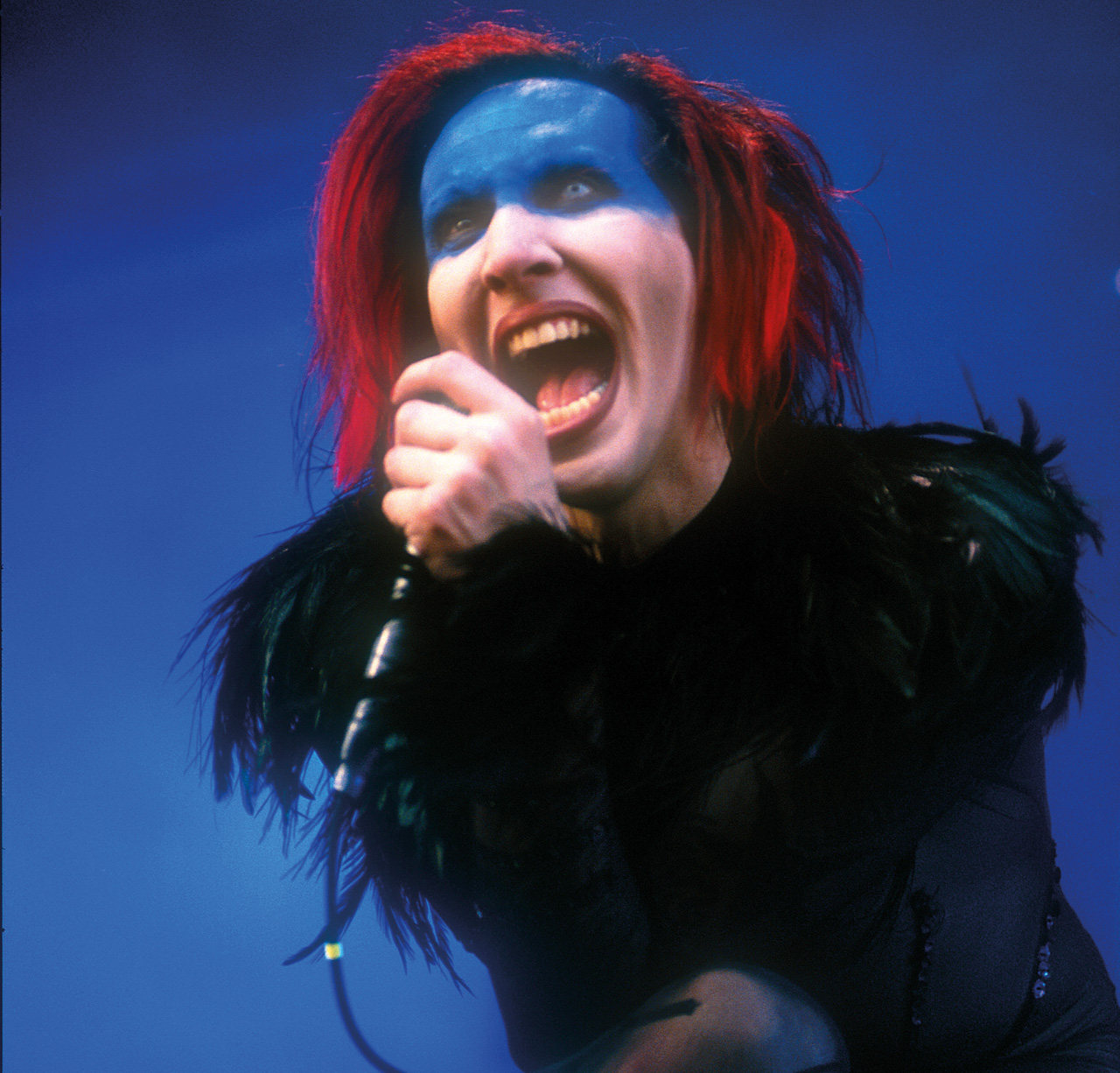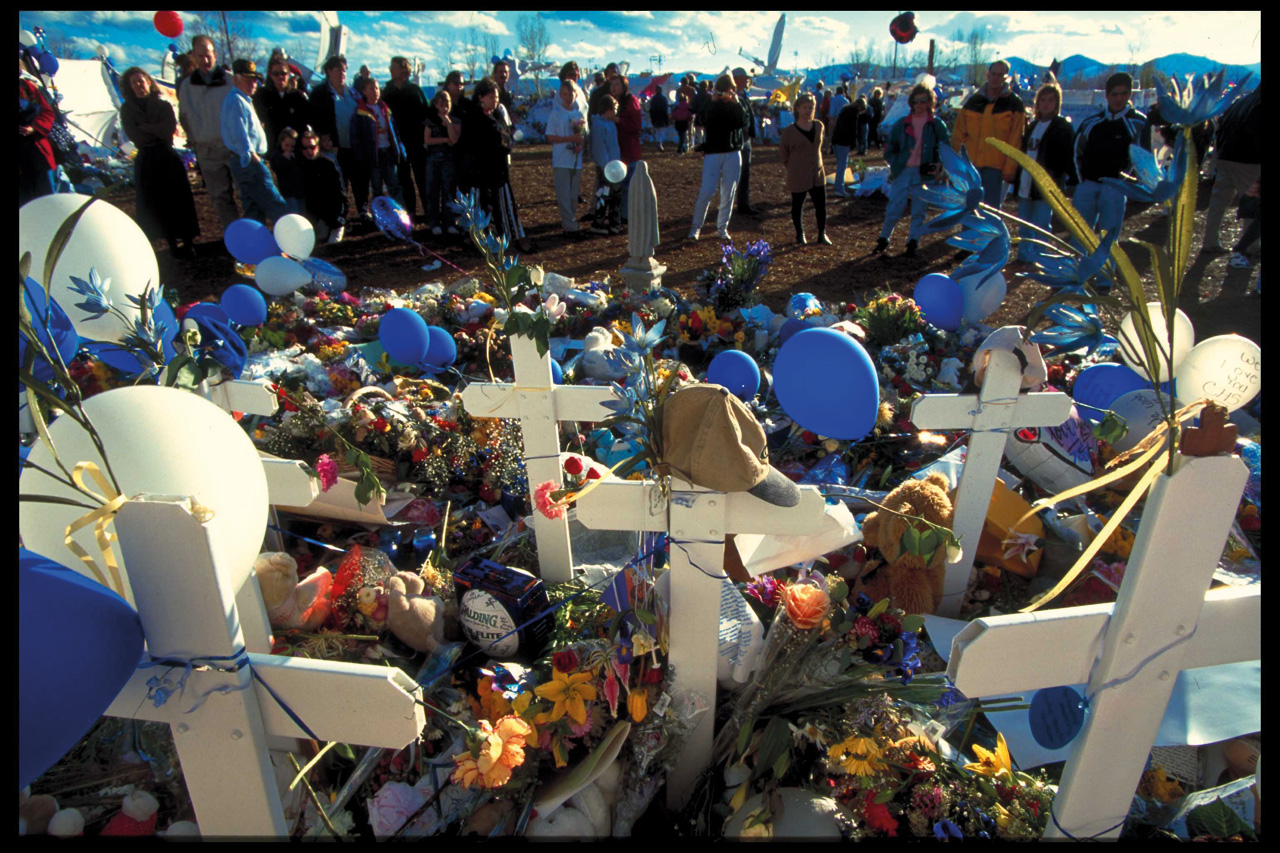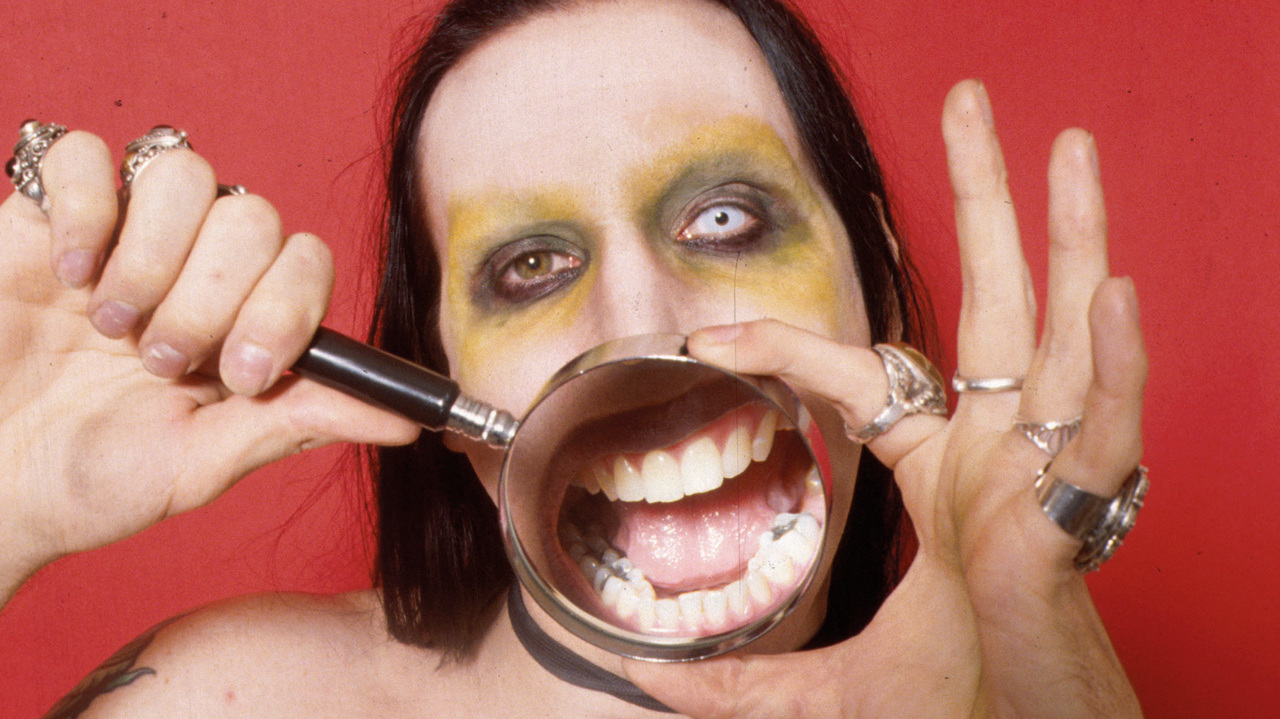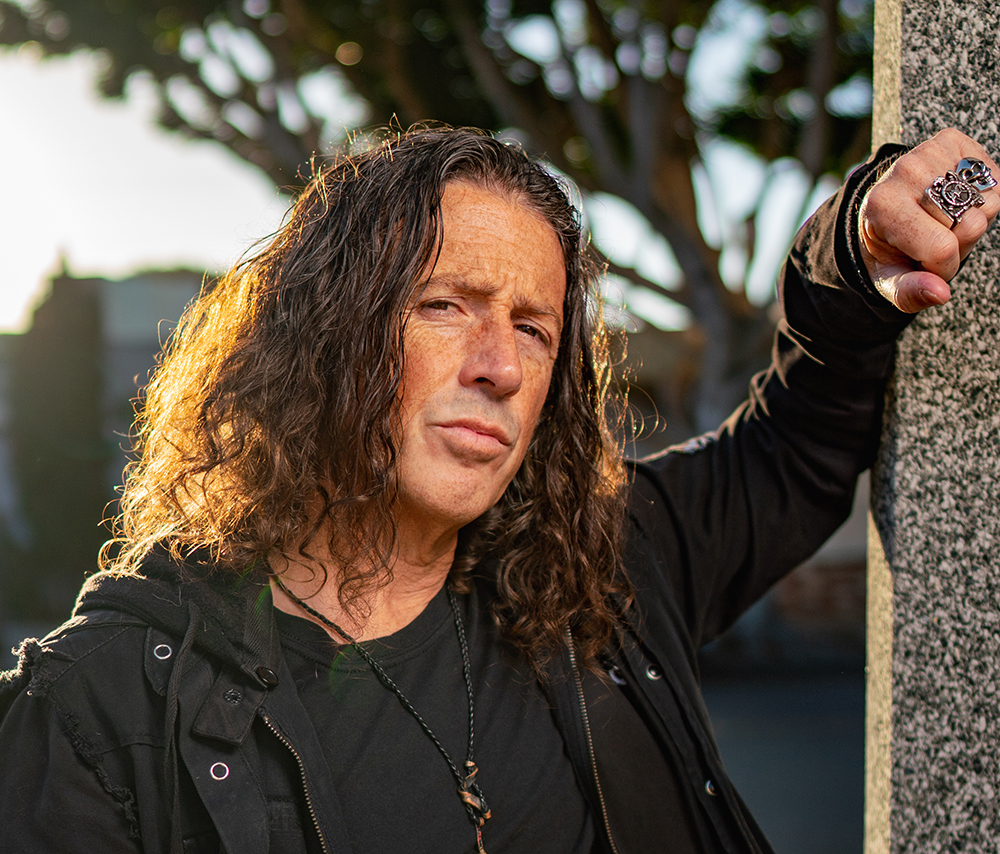In the spring of 1999, heavy metal was thrust into the centre of the most turbulent story of the year – the Columbine shootings.
On April 20, 1999, students Dylan Klebold (aged 17) and Eric Harris (18) walked into Columbine High School, in the suburb of Littleton, Colorado, armed with duffel bags packed with a terrifying arsenal of firearms and explosives. At around 11:20am, the two began randomly gunning down whoever crossed their paths, indiscriminately slaughtering kids hiding in rooms throughout the school.
Major networks televised the whole bloody, jaw-dropping ordeal live. As a SWAT team sieged the school, gunfire could be heard across campus, and 45 minutes later, the killers ended the massacre by taking their own lives in the school library. Twelve students and one teacher died and more than 20 others were critically wounded.
As the world reeled from the startling scale and depravity of the murders, news outlets wasted little time in singling out heavy metal music as bearing the brunt of the blame, erroneously reporting that the two killers had been motivated by the music of the Antichrist Superstar himself: Marilyn Manson.
Perhaps reporters and politicians saw Manson as an easy target, with his ghastly appearance, his provocative stage shows and his unapologetic appetite for sex, drugs and whatever manner of vice came his way. Regardless of their reasons, the media were soon to find out they’d picked on the wrong guy.

In the news game, nothing attracts readers and viewers like hysterically sensationalised headlines that fill people with such gulping, chest-constricting fear that they stop everything they’re doing and watch. For the Columbine tragedy, the mainstream media needed a larger-than-life villain, and in Marilyn Manson they had their man – or so they believed.
Born as Brian Warner in Canton, Ohio, on January 5, 1969, Marilyn Manson debuted in 1994 with Portrait Of An American Family. But it was 1996’s Antichrist Superstar that saw the captivating frontman emerge as a bona fide pop culture anti-hero. 1998’s Mechanical Animals, with its cover featuring a nude and androgynous Manson, complete with flaming red hair and breasts, did little to dim his controversial aura.
Shortly after the killings, allegations surfaced that the shooters – members of a self-styled gang they called the Trenchcoat Mafia – were inspired by Manson’s music. In fact, Dylan and Eric weren’t Manson fans at all. But the witch-hunt was only just beginning.
At the time, Nashville Pussy held the opening support slot on Manson’s tour. Singer Blaine Cartwright recalls that the tour was scheduled to stop at Red Rocks Amphitheatre in Colorado only a few days after the shootings, but the show was cancelled.

“Our old drummer, Jeremy [Thompson], pointed out that if the shooters had liked Marilyn Manson so much, why didn’t they wait until after the concert? Nobody’s ever brought that shit up. The tour was going there in a few days. If they liked Manson so much, how come they just didn’t wait?”
In fact, Dylan and Eric were fans of a number of other bands, including Rammstein and KMFDM. Both Rammstein and KMFDM issued statements, expressing sympathy for the victims and families and emphatically denying any connection to the shootings. Meanwhile the attacks on Manson persisted in the form of headlines like, ‘Killers Worshipped Rock Freak Manson’ and ‘Rock King Of Evil The Kids Adore’. As the singer would later say, “It was unthinkable [to society] that these kids did not have a simple black-and-white reason for their actions. And so a scapegoat was needed.”
“Marilyn Manson was public enemy number one at the time,” Blaine says, “because [in his shows on that tour] he was trying to be outrageous and shocking, and so it was convenient to blame him for this, but there was no connection to him whatsoever.”

Manson was badgered for interviews by the very outlets that were dragging him through the mud, but he refused to take the bait. Eventually he did speak out, penning an utterly brilliant op-ed column for Rolling Stone. Manson’s feature, ‘Columbine: Whose Fault Is It?’ took an incisive and unsparing look at the role of the media in glorifying fame-hungry criminals by giving them the coverage they gravely seek.
“From Jesse James to Charles Manson,” he wrote, “the media, since their inception, have turned criminals into folk heroes. They just created two new ones when they plastered those dip-shits Dylan Klebold and Eric Harris’ pictures on the front of every newspaper.”
Reasoned, absorbing and stacked with facts and revelatory insights, Manson refused to go on the defensive, instead casting a far wider net for the blame. “When it comes down to who’s to blame for the high school murders in Littleton, Colorado,” he wrote, “throw a rock and you’ll hit someone who’s guilty. We’re the people who sit back and tolerate children owning guns, and we’re the ones who tune in and watch the up-to-the-minute details of what they do with them. I think it’s terrible when anyone dies, especially if it is someone you know and love. But what is more offensive is that when these tragedies happen, most people don’t really care any more than they would about the season finale of Friends or The Real World.”
Addressing the argument that artists should be held responsible for the crimes of their fans, Manson wrote, “Responsible journalists have reported with less publicity that Harris and Klebold were not Marilyn Manson fans – that they even disliked my music. Even if they were fans, that gives them no excuse, nor does it mean that music is to blame. Did we look for James Huberty’s inspiration when he gunned down people at McDonald’s? What did Timothy McVeigh like to watch?”
Highlighting the abject hypocrisy of the media benefitting from glorifying the criminals they purport to condemn, Manson not only deprived the outlets of sleazy headline fodder they so desperately craved, but he established himself as a rare sane and empathetic voice in what had become a fractious, vitriolic debate. Ultimately, the arguments implicating Manson withered from neglect and the media gradually shifted their attentions away from the singer.
“Marilyn’s a good guy,” says Blaine. “He felt bad even though he knew that he had nothing to do with it. He did this one interview [for Michael Moore’s 2002 documentary Bowling For Columbine] and he was asked what he would have said to those kids if he’d had the chance, and he said, ‘I wouldn’t have said anything, I’d want to hear what they had to say.’”
Eventually, Eminem would supplant Manson as the villain du jour, and Manson’s 2000 album, Holy Wood (In The Shadow Of The Valley Of Death) – an immersive reflection of the shootings and the cult of celebrity – reached 13 on the Billboard 200, drawing widespread praise as the band’s finest work to date. He would go on to release five more albums, receiving three Grammy nominations and a multitude of other nominations and awards.
Eighteen years on, we still don’t have any concrete answers regarding these senseless deaths, and we likely never will. But thanks to Manson, the right wing press will forever think twice about sensationalising death by demonising alternative culture.
Everything else that happened in 1999…
Headlines: Music festival Woodstock ’99 is plagued by controversy, including riots and assaults… The ill-fated Millennium Dome opens in London at a cost of £789million… The Euro currency launched… Bruce Dickinson rejoins Iron Maiden.
Movies: The Matrix appears – the first (and best) of the Keanu Reeves-starring sci-fi action trilogy… American Pie is a box-office hit… David Fincher’s head-fucking black comedy Fight Club is released… Lo-fi horror The Blair Witch Project shows you can make a hit movie on a micro budget.
TV: Epic Mafia tale and Best TV Series Ever Made (Possibly) The Sopranos makes its debut… Queer As Folk hits UK TV screens… Brilliant cartoon show Futurama launches as The Simpsons in the 31st century… The League Of Gentlemen becomes one of the most warped things ever shown on British TV.
Charts: Britney Spears’ …Baby One More Time is the UK’s best-selling song… Limp Bizkit seal nu metal’s status as the biggest musical movement of the late 90s, when their second album, Significant Other, sells almost 700,000 copies to go to Number One in the US charts.
Hero: Napster founders Shawn Fanning and Sean Parker – the men who revolutionised the music industry with their ground-breaking file-sharing service.
Villain: Napster founders Shawn Fanning and Sean Parker, who killed the music industry with their ground-breaking file-sharing service (especially if your name is Lars Ulrich).
RIP: Ex-Megadeth drummer Gar Samuelson (liver problem)… Gorgoroth’s Grim (drug overdose).
WTF?: The Millennium Bug – a media-fuelled nightmare scenario in which all computers would crash at the stroke of midnight on January 1, 2000, and the world would end. Spoiler: it didn’t.
The 90s issue: Your definitive guide to the craziest decade in metal

